I had the opportunity to upgrade to the LG G3 only a day after it arrived on Verizon Wireless. I had been following the device very closely, having previously fallen in love with my LG G2 and having had a rather mediocre personal experience with the HTC One M8. I jumped at the chance and have been putting the LG G3 through its paces for the past few weeks.
Interested in how it fared? Welcome to the LG G3 review!
Screen – Gorgeous QHD
The LG G3 sports a 5.5-inch, 1440×2560 Quad HD (QHD) screen. At 538 pixels per inch, it’s the sharpest display in a smartphone on sale in the North American market and possibly the world. There are two reasons as to why this phone has a ridiculously crisp display. The first reason is because Asian languages, like Korean, really benefit from having such a sharp display. This is because Korean characters are essentially images, and if the image is more crisp and clear, the characters can be read more easily, naturally. The second reason is that it’s a proof of concept for LG. They’ve now proven that they can push more pixels and higher resolution than ever before without sacrificing much in the way of battery life.
At first, looking at text on the G3’s screen will feel quite different. I’ve never seen the English language rendered in such high resolution text before, and it’ll look a bit odd to the eye at first. Adjusting to the change is quick, though. Games look absolutely brilliant on the large screen, but what continues to shock me is the fact that I simply can’t see the pixels, no matter how hard I look. This is definitely a new experience for me, though it should be noted that that a 1080p smartphone display is just fine for the average person. Someone who consumes a lot of media on their phone, however, will benefit greatly from the QHD display.
Hardware – Snappy As All Get Out
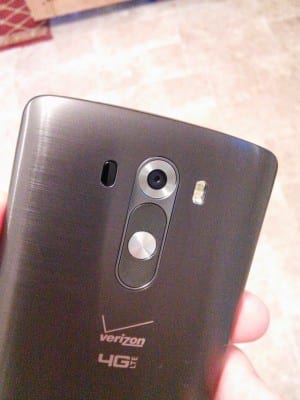
Under the hood, the LG G3 is every bit as powerful as the rest of this year’s flagship Android devices. It has a Qualcomm Snapdragon 801 processor that runs a quad core Krait 400 that clocks in at 2500 MHz – that’s fast. There’s 3GB of LPDDR3 RAM inside, as well as an Adreno 330 graphics processor. What do all those specs mean to you? Well, it means that this phone is very responsive and doesn’t really have issues running even the most taxing of apps.
The removable battery is 3000 mAh, which will last you all day, even with the LG G3’s display pushing all those beautiful pixels at your eyeballs. Wireless charging is built into the device, as you can see when you remove the backplate of the G3, but not all standards are enabled by US carriers by default. There are two fixes for this – either go with Duracell Powermat technology, which works on the LG G3 out of the box, or buy a case that supports Qi wireless charging, such as the Quick Circle folio case or any number of third-party backplates for the G3.
Wireless bandwidths include 802.11 a/b/g/n/ac and low power consumption Bluetooth 4.0.
Camera – 4K Video Recording Is Here
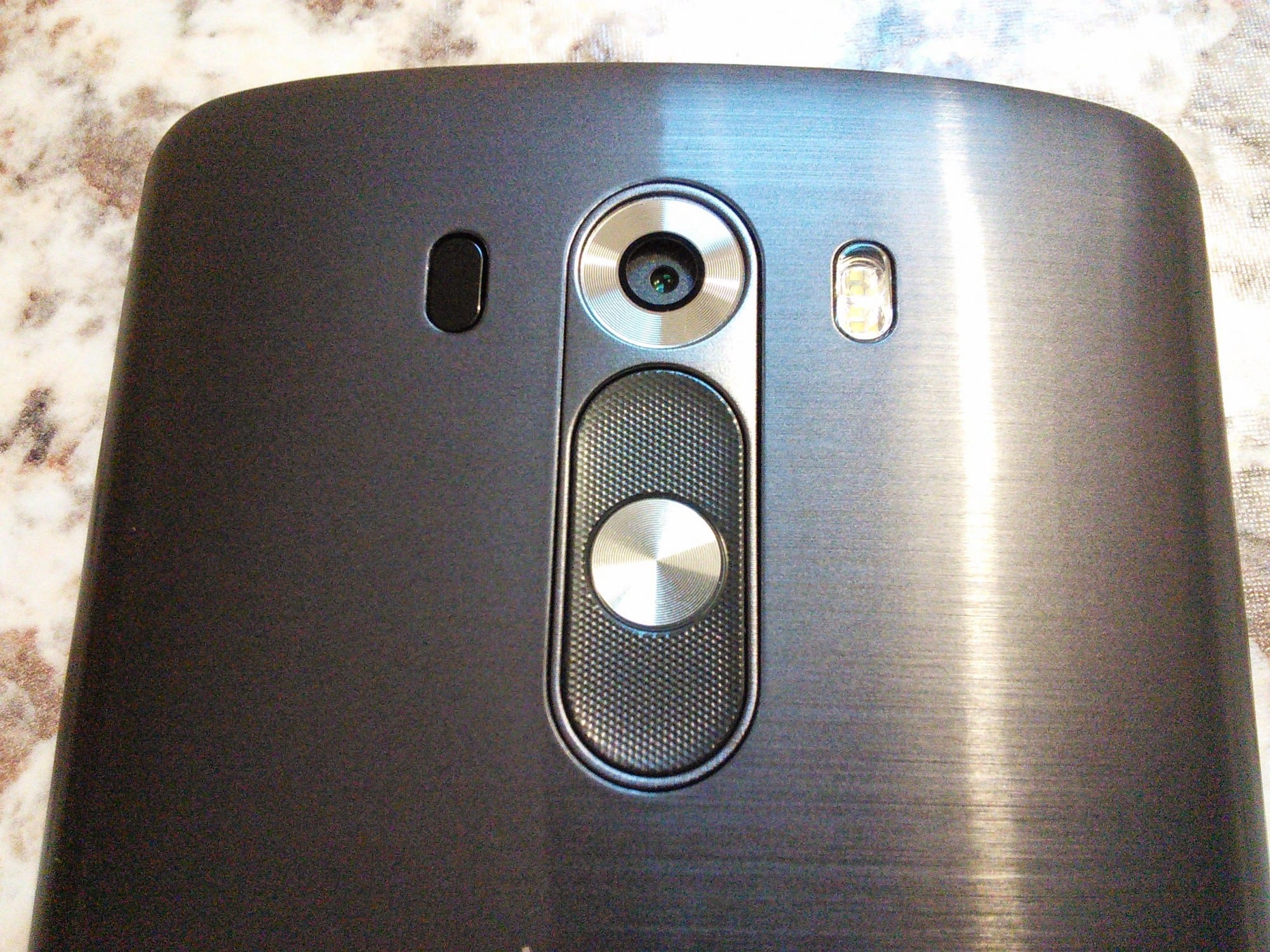
The rear camera on the LG G3 is 13 megapixels (the front being 2.1 megapixels) and has a number of extra features, not least of which is the fact that it can record video in 4K quality. This may not sound all that important right now, but with 4K resolution slowly becoming more widely available on streaming media websites like Netflix and Youtube, as well as being built into the next generation of flatscreen TVs, LG has a solid proof of concept. The lightweight, easily accessible UHD camcorder is here, and it’s now an everyday part of your Android phone.
Other camera features include enhanced optical image stabilization (OIS), burst mode (press and hold the shutter button), HDR mode, and panorama mode. The phone’s auto-focus gets a major enhancement with laser-assisted auto-focus that, in my experience, really improves the focusing of the camera over other smartphones. That’s right – this thing shoots lasers! Just infrared lasers, of course, but it’s still a great addition to the phone. With the processor being as fast as it is, snapping pictures happens nearly as fast as you can press the shutter button. The camera software is lightweight and leaves a lot of editing to other apps, giving you quality pictures to play around with.
The camera has a handful of fun features in addition to the standard fare. When the camera is loaded, you can swipe left or right to quickly switch from front to rear camera. Gesture Shot is an easy way to take a selfie – if you’re into that sort of thing – by raising your hand in front of the camera, allowing it to be detected, and then making a fist to take the photo. For the record, Gesture Shot only works when one person is in the camera’s viewfinder. You can use Voice Shutter to take a snapshot when you say “Cheese,” “Smile,” and a host of other words. Lastly, Dual Camera allows you to take front and rear camera shots at the same time.
Software – Usually Slick, But Sometimes Bland
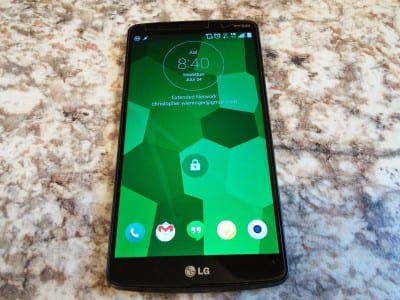
Carrier bloatware aside, LG’s software isn’t as clunky as it has been in the past this time around. The G2 had a solid software experience that responded quickly and effortlessly. The LG G3 has made graphical improvements to that software whilst maintaining a high level of responsiveness. However, the color palette of the phone’s software is a bland combination of dull, flat colors, often against black or gray. There are other little things like that which you’ll notice throughout other places on the phone. For example, you can tell that the graphic designers were trying to go for professional with some of their app icons, but fell short with the coloration of those icons or the strange-looking icons like the Phone app icon. Definitely not in line, design-wise, with the Android 4.4 KitKat software running underneath LG’s custom skin.
One thing that should be addressed is that there’s a very rare stutter when navigating home screens or after tapping the home key. Occasionally, if you try to navigate and switch apps using the multitasker button, there can be a bit of lag. This is easily explained by remembering that, for all its power, the phone’s display is QHD. There’s bound to be a bit of an issue here and there with stutters as the processors try to keep up with what’s being displayed on-screen. Apps that are notoriously laggy or take longer periods of time to load add to the stress on the processors, but thankfully that stress is often handled with little issue.
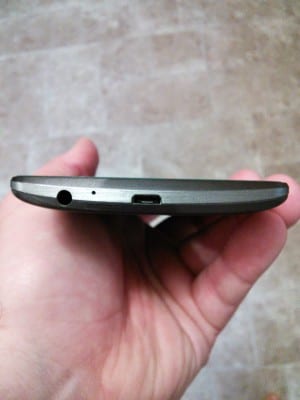
In a move that will appeal to many Nexus owners, LG is using software buttons along the bottom of the screen. Hidden in the task switcher button is a legacy option button, which can be accessed by pressing and holding the task switcher button. In the rare case that an app you’re using doesn’t display the three vertical dots for additional options, you can use that legacy button to access those features.
If you tap and hold the back button, you’ll launch Dual Window, LG’s answer to Samsung’s Multi Window, which lets you choose a handful of apps to halve on your screen. For example, you can have Hangouts open on the bottom half of your screen while you’re watching a YouTube video on the top half. There isn’t a lot of difference between Dual Window and Multi Window – both features are sort of limited as to what apps are available for use. It’s nice to have Dual Window as an option, though, even if it is essentially a clone of Samsung’s multitasking software.
LG’s Smart Notice widget, which you’ll notice on the primary home screen of your G3 after you boot it up, is largely a lackluster LG version of Google Now. It’s useful now and again – it can alert you that there might be a sudden temperature drop later in the day, and remind you to take a sweater – but that’s about the extent of the service’s abilities and usefulness besides callback reminders.
Also added as a home screen is LG Health, which is at the far left of the home screens. LG Health allows you to keep track of your fitness goals. It’s not quite as full-bodied as, say, Endomondo or RunKeeper, though. As a RunKeeper user, I cannot see LG Health replacing my current exercise app, but there are some that will appreciate the Smart Notice integration that LG Health has.
Wrap Up
When it comes down to the wire, it doesn’t much matter which 2014 flagship device you buy. Thanks to a fully mature platform, the Samsung Galaxy S5, HTC One M8, and LG G3 are all some of the best devices we’ve ever seen in the history of Android. In true Android fashion, there’s so much variety in quality products from manufacturers that whichever phone you choose, you’ll be picking something amazing. For me, that phone is the LG G3.
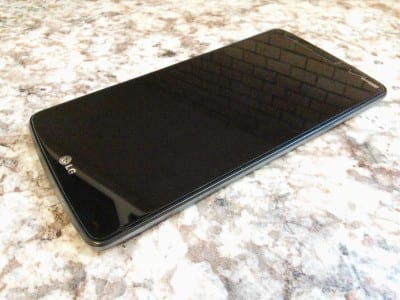
Because of the camera features, screen resolution, and amount of included and expandable storage, the G3 is the Android smartphone that perfectly fits my needs. It’s large, yet thin, which makes it as easy to carry as the M8 or Galaxy S5 without sacrificing the larger screen that I love. Although it shares the same processor as the other two models, the processor is better-optimized because the G3 has a lighter UI than the Galaxy S5 or even the M8. The occasional software stutters that occur are more than manageable and are so few that they don’t bother me. The G3 is the best bang for your buck as far as I can tell, especially if you’re excited about having an astonishing 536 pixels per inch at your fingertips.
Which of these phones is your favorite, and why? Let us know in the comments below, or on Facebook, Google+, and Twitter!
Last Updated on November 27, 2018.

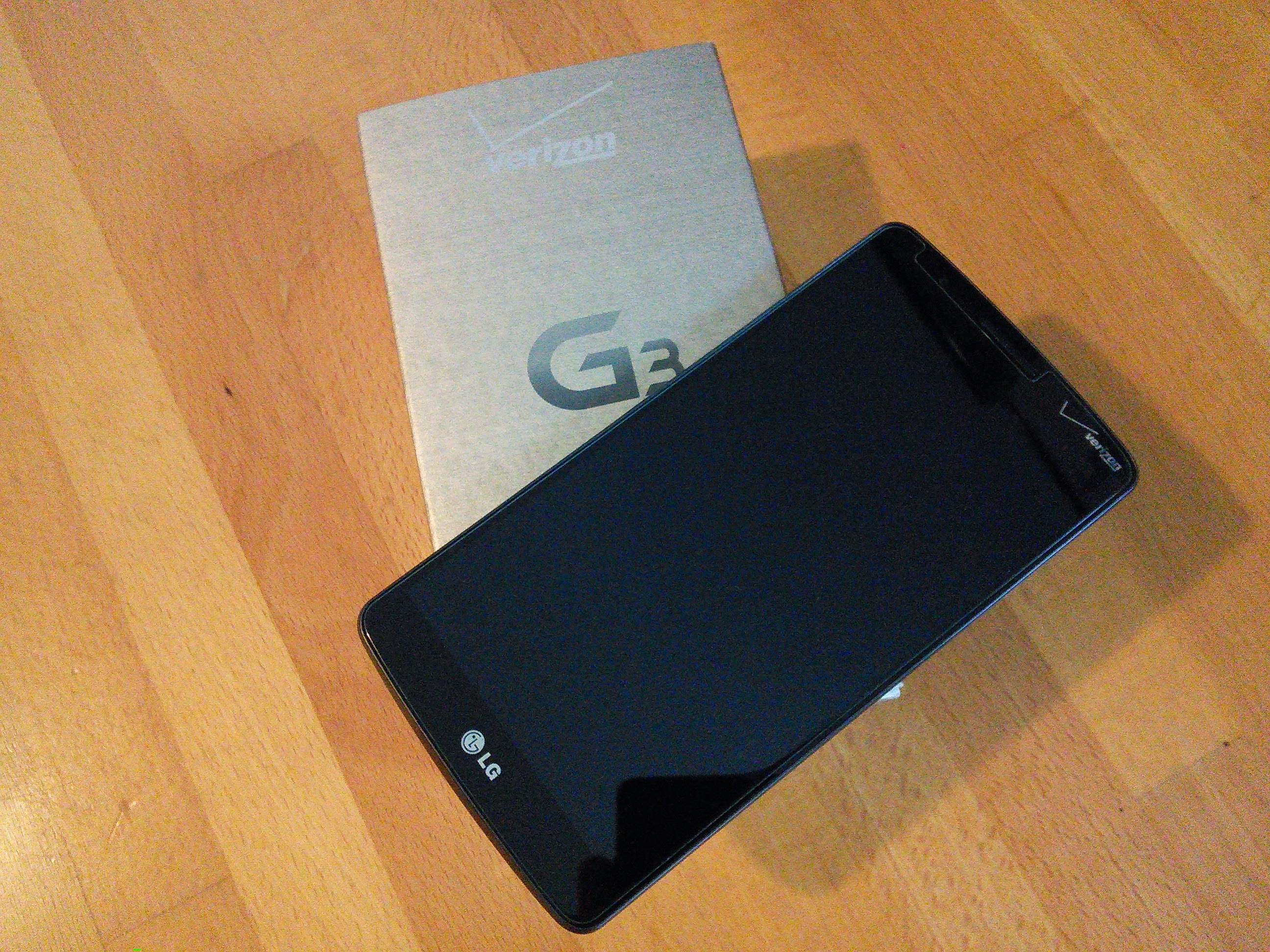









Comments are closed.